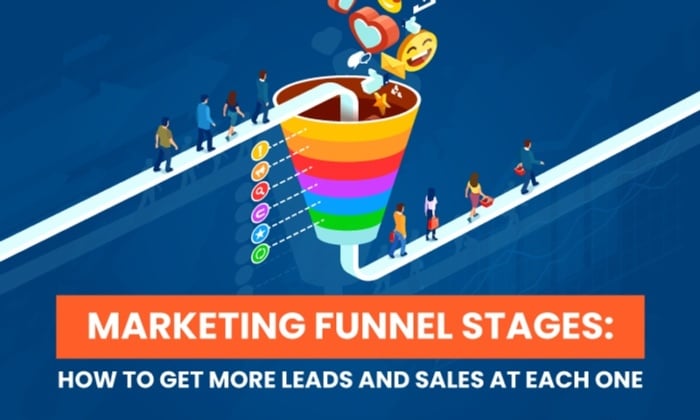23 Actual Content Metrics From Actual Marketers
To organize things a bit, we’ve organized the metrics into eight categories. Just the names themselves will give you a good idea of what’s important in content marketing. Let’s get to it. This type of metric measures the efficiency...

There are too many content marketing metrics out there. But we know which ones are actually used (we asked on LinkedIn and X). To organize things a bit, we’ve organized the metrics into eight categories. Just the names themselves will give you a good idea of what’s important in content marketing. Let’s get to it. This type of metric measures the efficiency of the content team. These metrics make perfect sense. Once you get a good grasp of your content strategy, you want to scale. In other words, once something starts to bring results, you want to do more of it. Two metrics you should consider here are: The first one, pointed out by Sara Stella Lantazio, is about the number of articles, videos, social media posts, emails, etc. published in a given period. Publishing frequency takes advantage of the very nature of content marketing - the more you do it, the better the results because they compound, and the easier it is to get those results, too. It’s true, regardless of the channel you’re using. For instance, here’s a chart from Ahrefs’ Site Explorer showing how the traffic (orange) and referring domains (blue) to my article portfolio have grown proportionally to the consistent growth of new articles published (yellow). The second metric, meeting deadlines, was mentioned by Nick Jordan. This might be helpful for in-house teams, but it’s super important for agencies. It tells you everything about how realistic your estimates were and whether you can take on more work. We’ve received many responses underlining the importance of organic search traffic, and keywords are the absolute cornerstone of this channel. As you probably already know, the higher you rank for keywords, the more visible your pages are on the search engines like Google, and the more traffic you get. The metrics that marketers mentioned to us were: There are two types of tools you’ll need to track these metrics: Next to keywords, backlinks are another thing content marketers use for measuring content performance. They are a measure of the impact of the content on the site’s authority. And there’s a simple reason why backlinks are so important - they are still one of the strongest ranking factors. The more backlinks a page gets, the higher its chances to rank. Moreover, the link equity you acquire this way flows throughout the entire site through internal links and increases the site’s authority. Our commentary: backlinks are increasingly hard to get. They’ve become a currency of the web between those who need backlinks and those who can provide them. So, theoretically, backlinks should be a sign that your content is so good that people want to link to it, but in reality, some sites won’t link until they get something in return. So we’d say track backlinks but only to your link bait content or if you’re doing link building. An interesting insight into this topic came from Goran Mirkovic — don’t track backlinks in the very early stages of the site. It takes time to earn them, whether naturally or by link building. Tip The quality of backlinks matters more than quantity. If you’re an Ahrefs user, you can turn on the Best links mode to see the growth of the most impactful backlinks. Leads measure the content’s effectiveness in converting visitors into prospects. Typically, this metric is used with either gated content that requires contact information to access or content that encourages the visitor to get in touch, for example, for free consultation. What we’ve heard from marketers is mostly pretty much the standard: And there was one metric I don’t see very often - high intent leads or HILs, shared by Josh Bradley. These are the people who demonstrate a clear need for a product like yours. Best if they match your ideal customer profile. The best way to track leads is with a tool that allows for lead scoring and easier handoff to sales (Hubspot and the likes). Traffic is the measure of content’s effectiveness in attracting clicks to your site. That’s right, not unique users, just their clicks. You want to measure traffic only for content that is actually designed to generate traffic. Some social media posts (if not most) or emails won’t fall into this category because they are meant to be digested on the spot with no clear CTA guiding to the site. The best way to measure traffic is to measure its growth. Marketers do it on a monthly, quarterly, and yearly basis. Shorter time periods are rare since content marketing takes time. But here’s a pro tip - if you want to see which content landed well, you can take the first 7-day period to identify that content. “I often measure how much traffic an article received in the first week. It’s a good indicator of how well we ‘launched’ and promoted each article, and which topics were most interesting to our audience.” Many analytics tools track traffic, but not all of them show you growth, so here’s the formula for traffic growth: You can also measure the total traffic to pieces or directories of content to compare them or show the impact of the part to its sum. Ahrefs lets you do that in two ways: through Site structure report and by manually choosing which content to group together via the Portfolio feature. Another reason why you’d want to measure traffic is to measure conversion (more about that in a bit). Traffic is the basis of conversion because it tells how many clicks resulted in sign-ups or sales. Let’s take a closer look at organic traffic since this type was mentioned to us the most. In terms of absolute numbers, the most accurate data will come from Google Search Console. Just open the tool and go to the Performance tab. However, SEO tools like Ahrefs will give you better functionality despite the metrics being estimations. You can: Tracking traffic is just a means to an end, and this is where SEO tools got your back too. In Ahrefs, there’s a nifty report called Opportunities which points you to pages and keywords with a good outlook for improvement. Audience growth shows the demand for more content from your audience. Social media, email, and podcasts are the channels where you want to measure that. In terms of the actual metrics, these came up in our poll: No surprises here. Standard metrics, natively tracked on the respective platforms. At Ahrefs, we track some of these metrics, too. They’re especially helpful for gauging the impact of new types of content. Generally speaking, if you’re creating relevant and valuable content, the number of subscribers should be growing. But it’s worth keeping in mind that there are some nuances here: Engagement is the measure of content’s ability to catch and keep attention. Engagement is probably the most controversial type on this list. It’s supposed to be a proxy of how interesting/entertaining your content is, but it’s not always reliable since it’s dependent on too many factors: We were informed about the following metrics: One interesting metric we saw was content mentioned in conversations with sales reps. So if the content makes its way into a prospect’s hands and it’s good or helpful enough to be mentioned in a conversation, that’s huge. It’s pure word-of-mouth, comparable to recommending music or a movie to a friend (thanks again for the tip, Sara Stella Lantazio). Another interesting insight about engagement came from Rohan Hayes. He tracks engagement only for the ideal consumer profiles. Makes sense since this additional dimension of metrics takes the “vanity” out of “vanity metrics”. In other words, the direct impact of content on the bottom line. You could also define it as the content’s ability to generate the most valuable interactions because not all content says “buy”. Here are some of the metrics we’ve seen in the comments (we added one ourselves). Tip For detailed data insights, like linking revenue to website traffic, ChatGPT can help. Simply ask, “Analyze this data, calculate and visualize the correlation between [data points].” This straightforward request provides clear, convincing results. Just one more thing before we wrap this up - not all of these metrics were tracked by all marketers. This means that content strategies differ, and it’s ok if some of these metrics don’t make sense in your strategy. Take your time and choose the ones that do.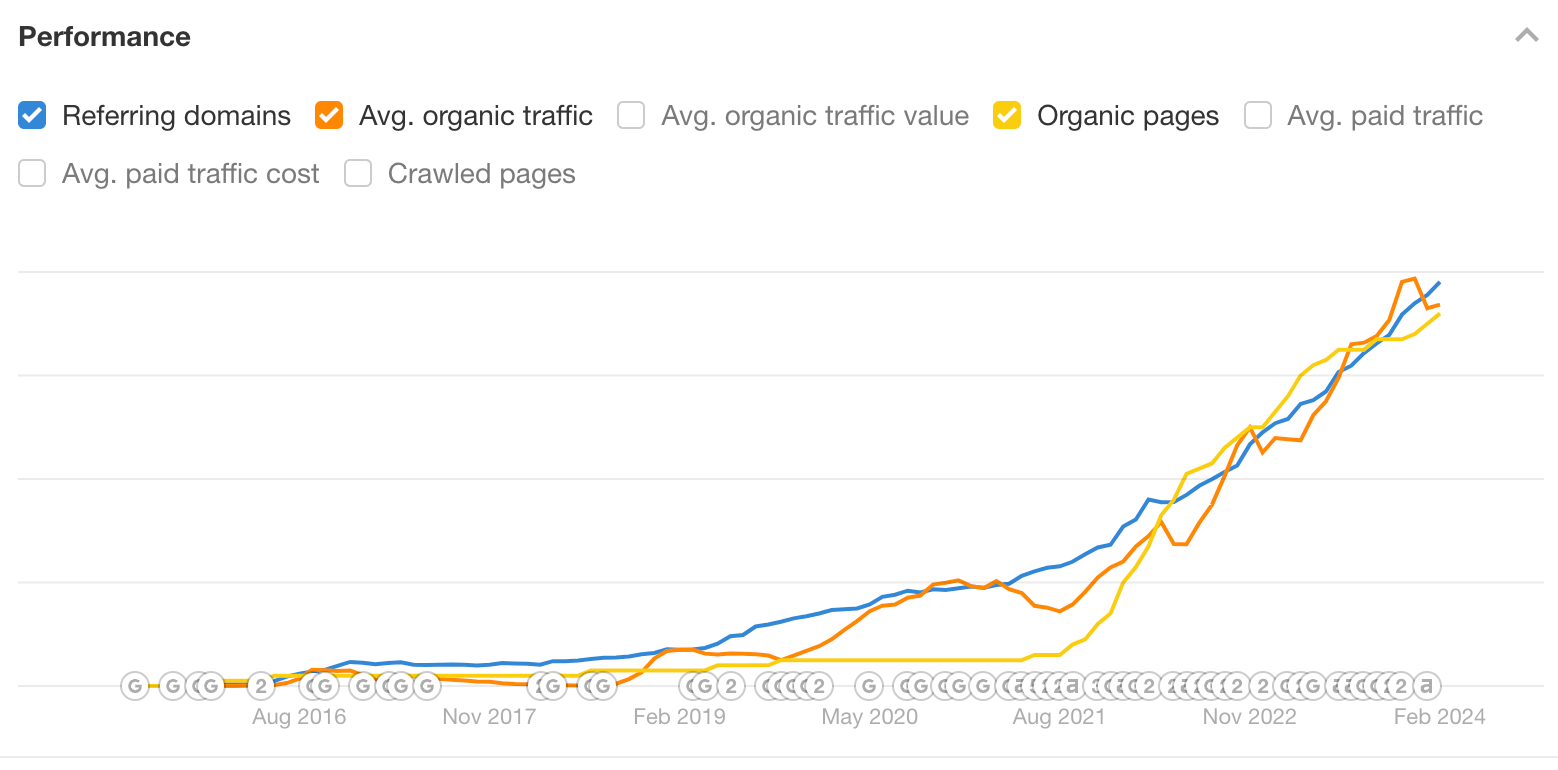

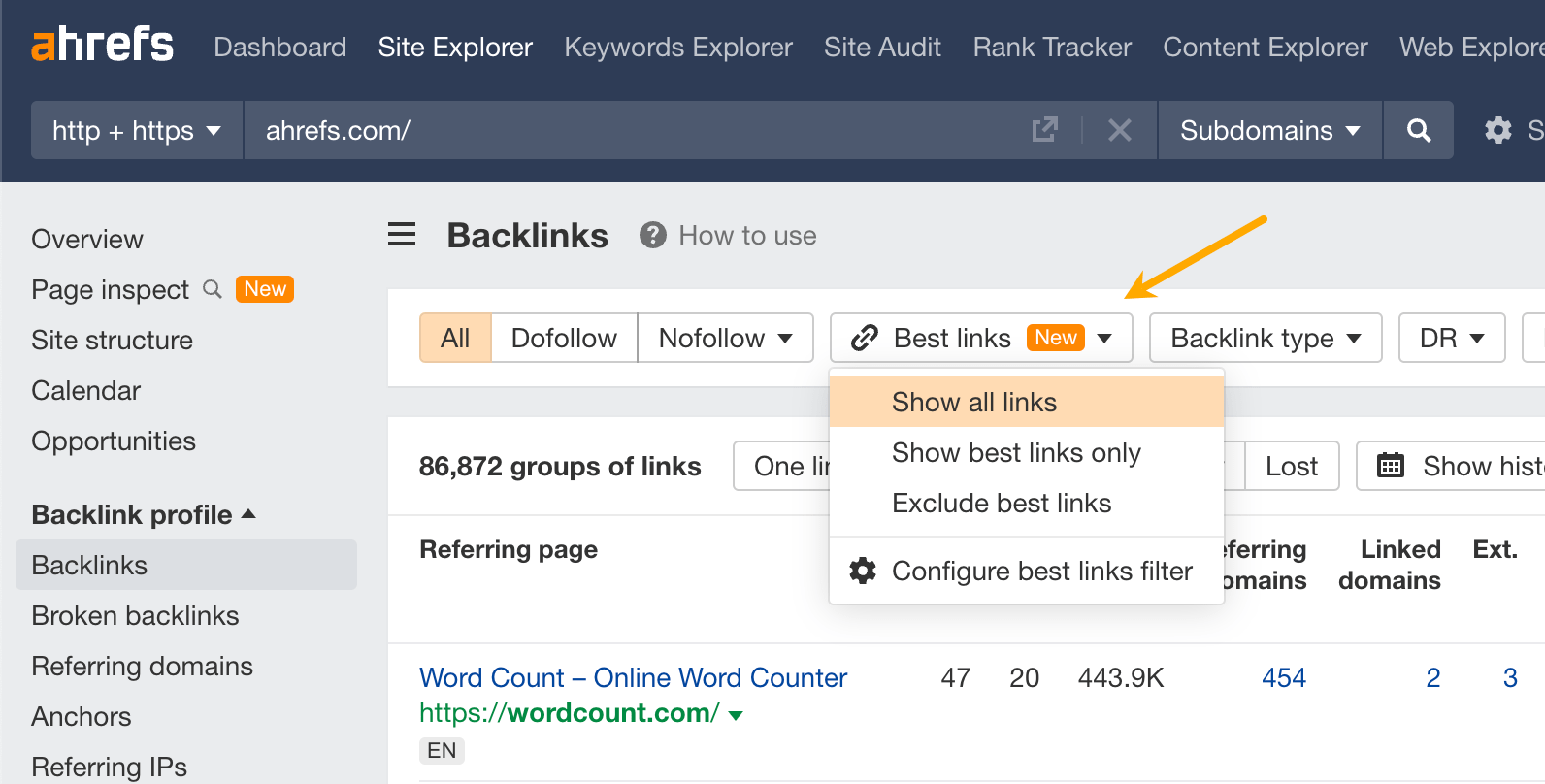

 Site structure report.
Site structure report.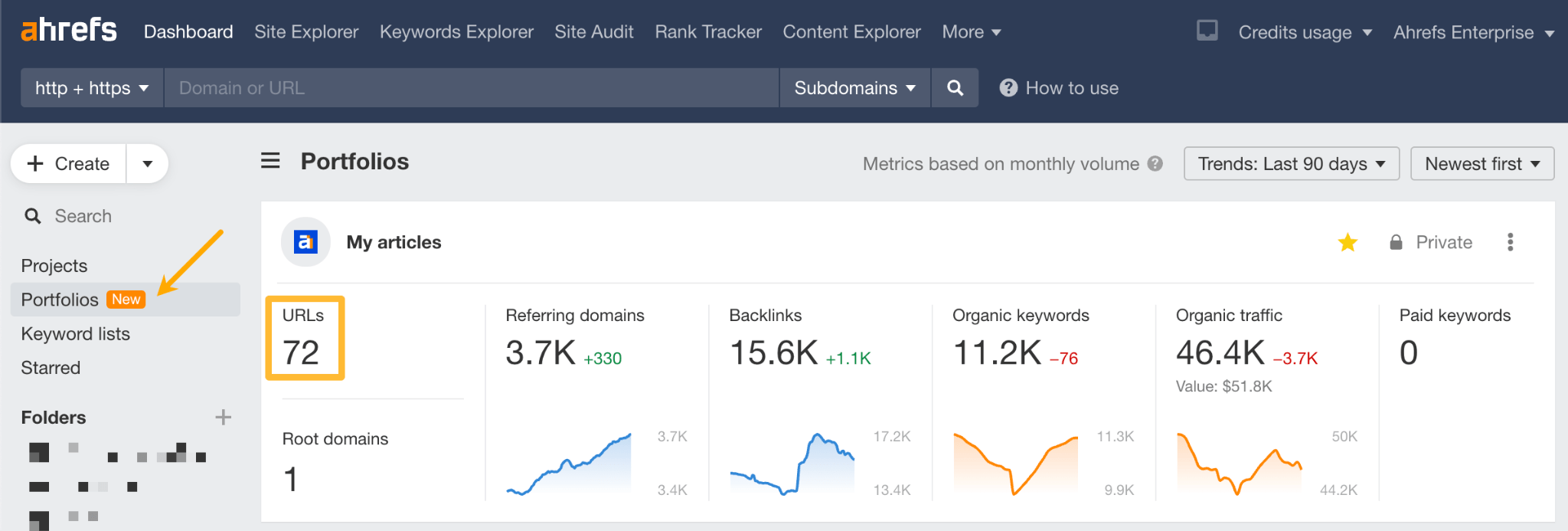 Portfolios feature.
Portfolios feature.
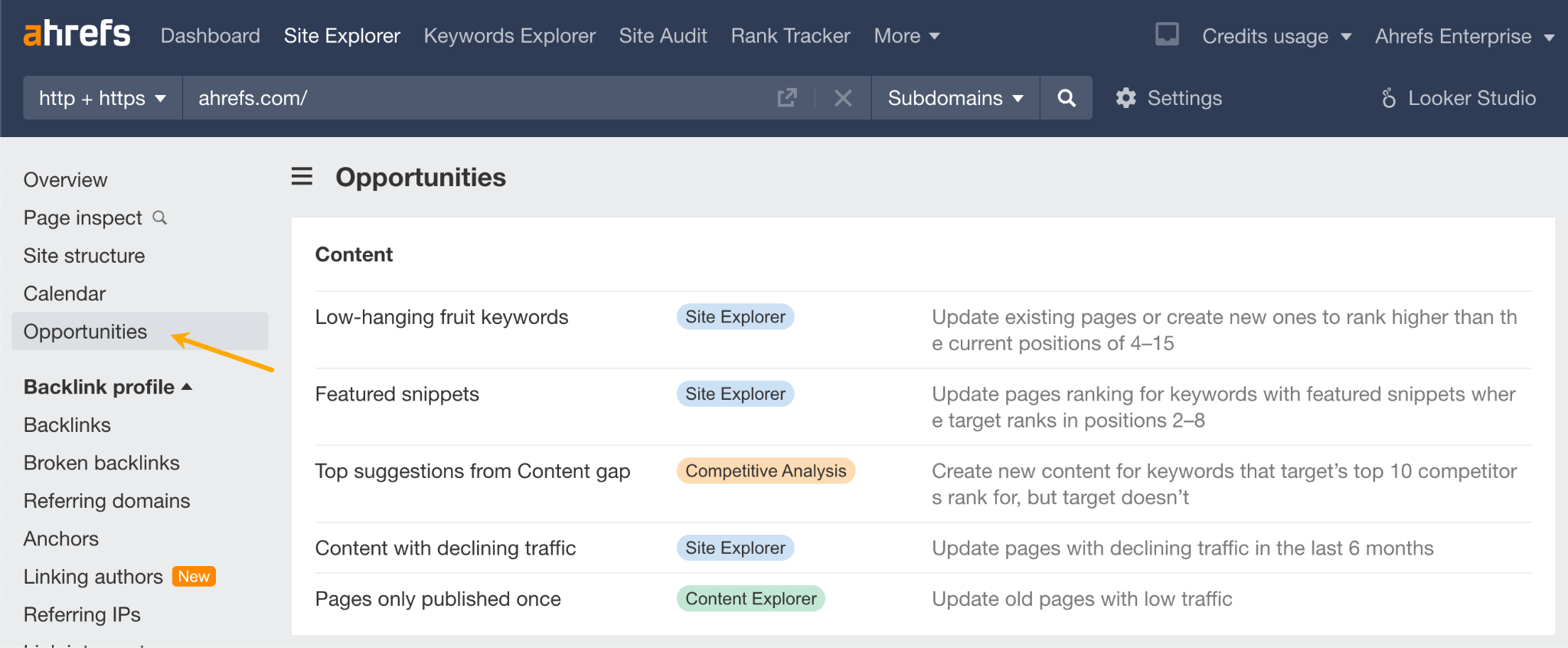
 Organic growth of subscribers to AhrefsTV
Organic growth of subscribers to AhrefsTV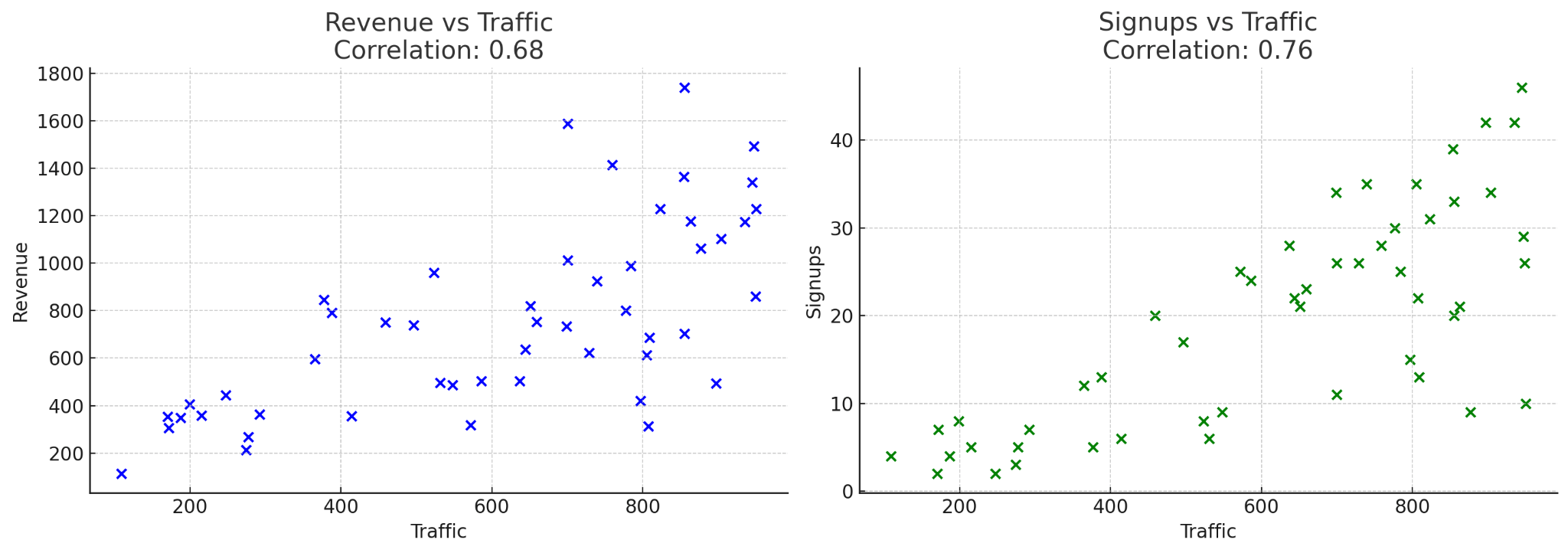
Final thoughts

 Lynk
Lynk 












